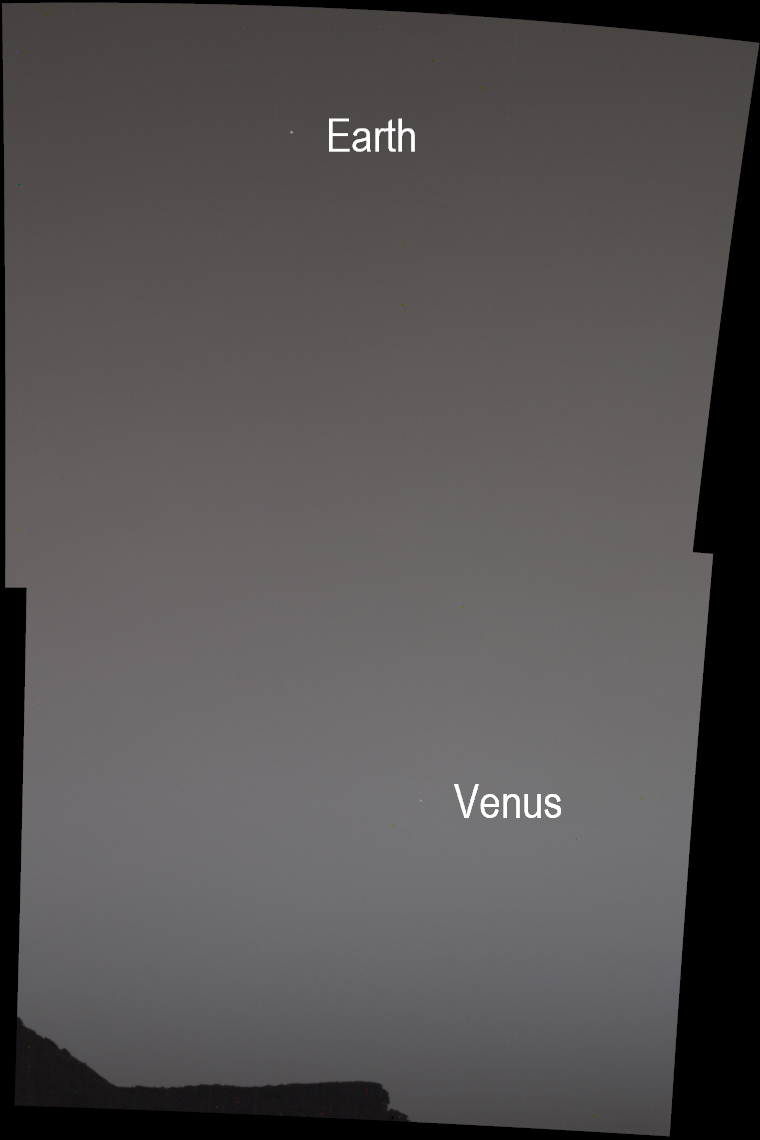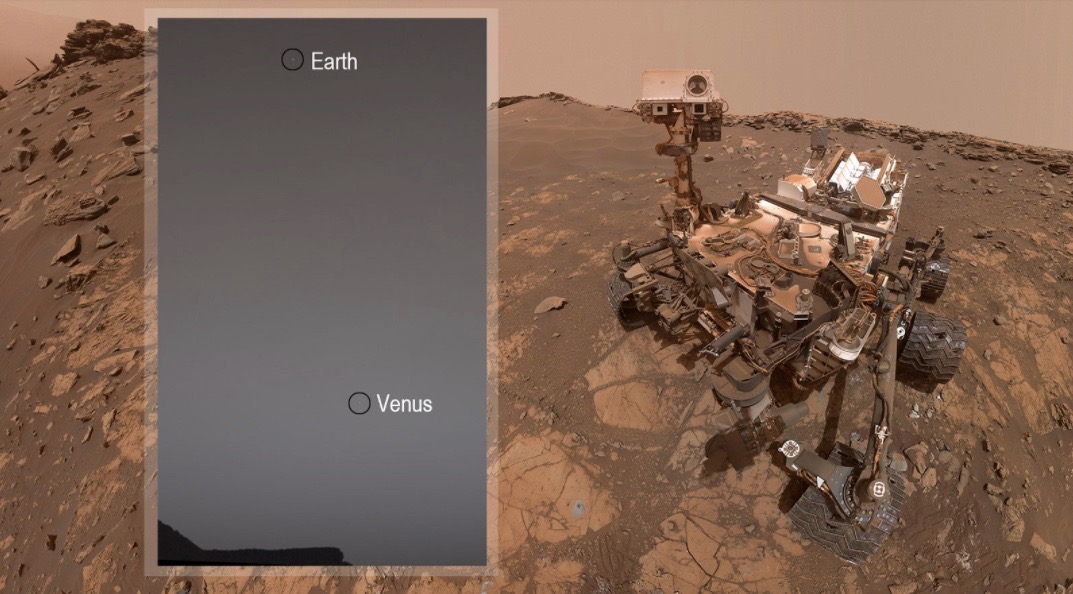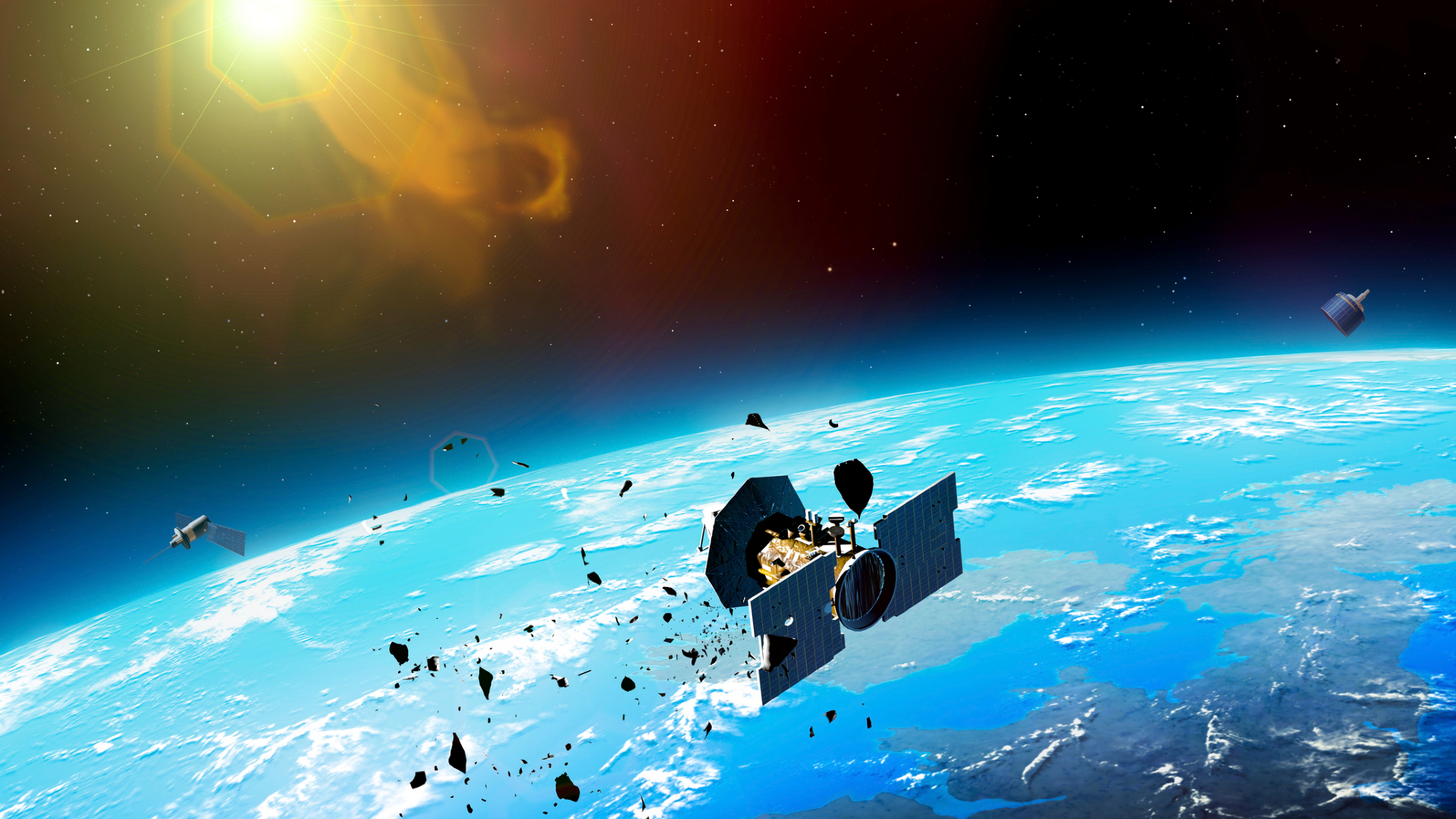See Earth and Venus from Mars in amazing photos from NASA's Curiosity rover
The six-wheeled robot has given us a unique perspective on our home planet.
NASA's Curiosity rover took a break from assessing ancient Martian habitability to gaze up at the Red Planet sky — where it found Earth.
Through the dusty Martian atmosphere, the car-size rover spotted its home planet and Venus about 75 minutes after local sunset on June 5, 2020, the 2,784th sol (Martian day) of Curiosity's mission. (The rover landed on Aug. 5, 2012.)
"A two-image twilight panorama reveals Earth in one frame and Venus in the other," officials at NASA's Jet Propulsion Laboratory in Pasadena, California, which manages Curiosity's mission, said in a statement. "Both planets appear as mere pinpoints of light, owing to a combination of distance and dust in the air. They would normally look like very bright stars."
Related: Amazing Mars photos by NASA's Curiosity rover (latest images)
To capture the new images, Curiosity used the same instrument it commonly employs to take Martian panoramas, the Mast Camera or Mastcam. And planet-spotting wasn't the only goal of this skywatching session: mission team members also wanted to look at the Martian twilight brightness.
On Mars, the planet's southern hemisphere (where Curiosity is situated, slightly below the equator in a big crater named Gale) is in late spring. The Red Planet takes about 687 Earth days to circle the sun once; a typical day on Mars is about 37 minutes longer than on Earth.
During the late Martian spring, there is quite a bit of dust suspended in the air. The particles reflect sunlight, brightening the atmosphere and making it harder to spot objects in the sky, said Mastcam co-investigator Mark Lemmon, a senior research scientist at the Space Science Institute in Colorado.
Breaking space news, the latest updates on rocket launches, skywatching events and more!
"Even moderately bright stars were not visible when this image of Venus was taken," Lemmon said in the same statement. "Earth also has bright twilights after some large volcanic eruptions."
Just visible at the bottom of the images is a rock feature nicknamed Tower Butte. Curiosity is slowly climbing the slopes of Mount Sharp (also known as Aeolis Mons), which rises from Gale's center, on a quest to understand how water may have shaped habitable environments on Mars more generally.
NASA's next Mars rover, Perseverance, is expected to touch down inside the 28-mile-wide (45 kilometers) Jezero Crater on Feb. 18, 2021, to probe ancient habitability in more detail and cache the most promising samples for a future Martian sample return mission. Perseverance's launch window opens on July 20.
- The search for life on Mars: a photo timeline
- Photos: Ancient Mars lake could have supported life
- Ancient Mars lakes and laser blasts: Curiosity rover's 10 biggest moments in 1st 5 years
Follow Elizabeth Howell on Twitter @howellspace. Follow us on Twitter @Spacedotcom and on Facebook.
OFFER: Save 45% on 'All About Space' 'How it Works' and 'All About History'!
For a limited time, you can take out a digital subscription to any of our best-selling science magazines for just $2.38 per month, or 45% off the standard price for the first three months.

Elizabeth Howell (she/her), Ph.D., was a staff writer in the spaceflight channel between 2022 and 2024 specializing in Canadian space news. She was contributing writer for Space.com for 10 years from 2012 to 2024. Elizabeth's reporting includes multiple exclusives with the White House, leading world coverage about a lost-and-found space tomato on the International Space Station, witnessing five human spaceflight launches on two continents, flying parabolic, working inside a spacesuit, and participating in a simulated Mars mission. Her latest book, "Why Am I Taller?" (ECW Press, 2022) is co-written with astronaut Dave Williams.



